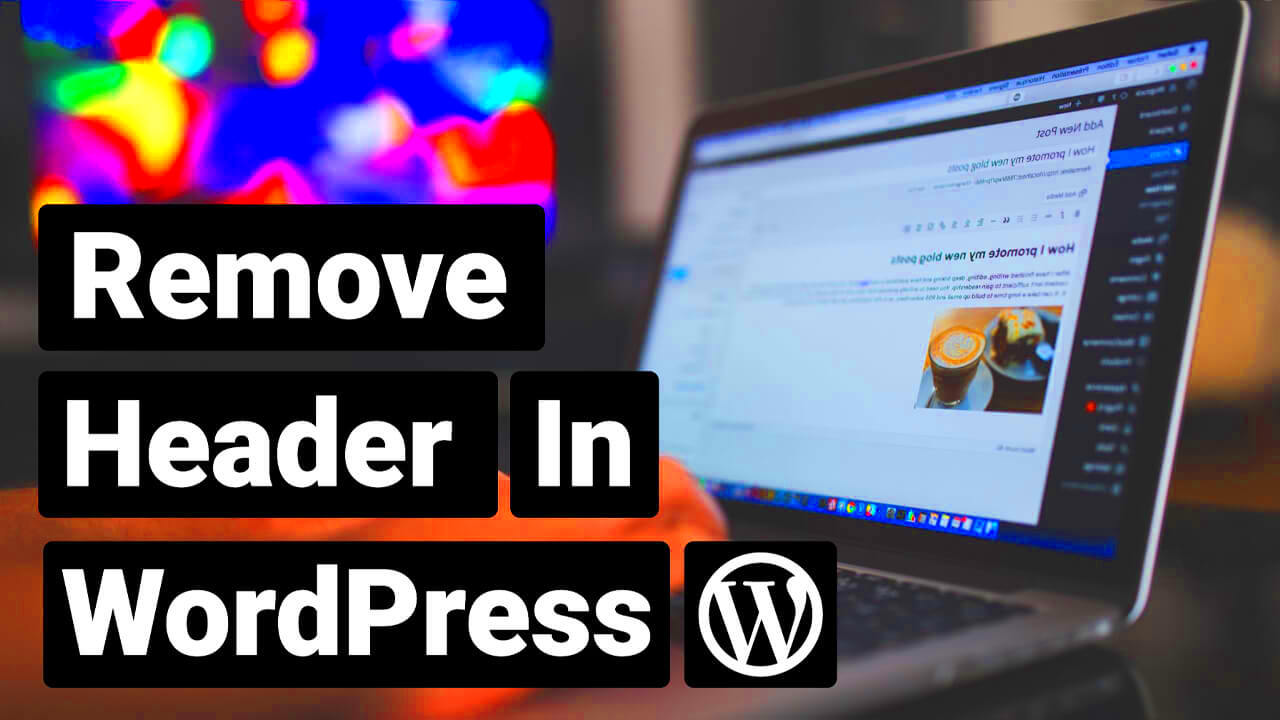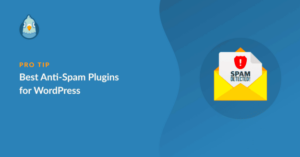Hey there! If you’re diving into the world of WordPress, you might have noticed that headers in your posts can sometimes distract from your content. Whether you’re crafting a sleek blog, a portfolio, or an online magazine, getting rid of those headers can create a cleaner look. In this post, we’ll explore some fantastic free plugins that make turning off headers in your WordPress posts a breeze. Let’s get started!
Why Remove Headers in WordPress Posts?

So, why would someone want to remove headers from their WordPress posts in the first place? That’s a great question! Here’s a breakdown of some reasons why you might consider this adjustment:
- Improved Aesthetics: Sometimes, less is more. A clean, header-free post can provide a more modern and appealing look.
- Enhanced Focus: By removing headers, you direct your readers’ attention solely to the content itself. This can result in a more engaging reading experience.
- Streamlined Layout: If you’re using multipurpose themes or templates, headers might sometimes clash with your design. Removing them can create a more cohesive look.
- Faster Loading Times: Fewer elements on a page can potentially lead to quicker load times, improving user experience.
Here’s a quick summary of the advantages:
| Advantage | Description |
|---|---|
| Improved Aesthetics | Creates a modern read. |
| Enhanced Focus | Brings attention to the content. |
| Streamlined Layout | Removes design clashes. |
| Faster Loading Times | Leads to better user experience. |
Ultimately, it’s all about making your blog look and feel the way you want. If you feel that headers are detracting from your content, a little adjustment can go a long way!
Popular Free WordPress Plugins for Disabling Headers

If you’re looking to streamline your WordPress posts by altering or disabling headers, there are several popular free plugins that can help you achieve that with ease. Let’s dive into some of the top options available, each bringing its own unique features to the table.
- Header Footer Code Manager
This plugin enables you to control what gets displayed in your site’s header and footer without any coding knowledge required. It’s user-friendly and offers flexibility in managing various scripts.
- Custom Header Extended
A versatile plugin that lets you customize your headers with just a few clicks. You can hide, show, or manipulate headers on a per-post basis, making it a robust choice for personalization.
- Elementor
While primarily known as a page builder, Elementor offers header customization options that allow users to turn off headers for specific posts. Its drag-and-drop interface makes it accessible for everyone.
- WP Code Lite
Ideal for those who have a bit of coding experience, this plugin allows users to add custom CSS directly and target header elements to turn them off selectively. A great choice for more advanced users.
Each of these plugins has its strengths and ideal user scenarios. Whether you’re after simplicity with Header Footer Code Manager or a more hands-on approach with WP Code Lite, you’ll find options that fit your needs perfectly.
Step-by-Step Guide to Using Each Plugin

Now that we’ve covered popular plugins, let’s walk through how to effectively use each one to disable headers in your posts. We’ll make it easy and straightforward!
1. Header Footer Code Manager
- Install the plugin from the WordPress plugin repository.
- Activate it from the “Plugins” menu.
- Go to “HFCM” in the sidebar and select “Add New.”
- Choose the display options to hide the header.
- Save changes and check your post!
2. Custom Header Extended
- Search for and install the Custom Header Extended plugin.
- Once activated, navigate to the settings within your post editor.
- Look for the header customization options.
- Select the option to disable the header for that specific post.
- Publish or update your post to see the changes.
3. Elementor
- Install and activate the Elementor plugin.
- Edit the post with Elementor.
- Go to “Page Settings” and look for the header settings.
- Toggle the header visibility option to “Hide.”
- Update your changes and view the final result!
4. WP Code Lite
- Install and activate the WP Code Lite plugin.
- Go to “Code Snippets” from the dashboard.
- Add a new snippet with custom CSS to target the header (e.g.,
header { display: none; }). - Save the snippet and apply it to your desired posts.
- Check your posts to confirm headers are hidden!
Using these plugins is generally quite intuitive, but don’t hesitate to explore settings and documentation for extra customization. Enjoy creating your header-free posts effortlessly!
Customizing Header Settings with CSS
Are you looking to fine-tune the header settings on your WordPress posts? Customizing headers with CSS can be a game-changer! While plugins can help you manage headers effortlessly, CSS allows you to inject your own style and make your site truly your own.
CSS (Cascading Style Sheets) is a language used to style web pages. When it comes to modifying headers, understanding a few key CSS properties can really elevate your header game. Here are some essential CSS properties you might consider:
- display: You can manage the visibility of your headers by setting this property to
none. - margin: Adjust the spacing around your headers with this property. You can add or reduce space as needed.
- font-size: Change the font size to make your headers stand out or blend in.
- color: Alter the header’s color to match your site’s theme.
To apply CSS changes, simply navigate to your WordPress dashboard, go to Appearance > Customize > Additional CSS. Here’s an example of a simple CSS code snippet to hide all post headers:
.post-title { display: none;}Just remember, while customizing headers with CSS can be very effective, it’s crucial to keep readability and accessibility in mind. Test your changes on various screen sizes and devices to ensure they look great no matter how your visitors access your site!
Best Practices for Use
When it comes to using plugins and CSS for managing headers in your WordPress posts, following best practices is key. You want to ensure your approach is not only effective but also maintains the quality of your site. Here are some best practices to keep in mind:
- Backup Your Site: Always create a backup before making significant changes. There’s nothing worse than losing your customizations due to an error!
- Test Changes: If you’re manipulating headers via CSS or plugins, test everything thoroughly. Use tools like Chrome DevTools to see how your site looks across different browsers and devices.
- Avoid Overloading Plugins: While it’s tempting to install multiple plugins, keep your site performance in mind. Too many plugins can slow down your website. Stick to the essentials.
- Stay Updated: Keep your plugins and themes updated to leverage new features and security fixes. This can also prevent compatibility issues.
- Document Your Changes: When you customize with CSS or adjust settings, keep track of what changes you’ve made. This makes it easier to troubleshoot problems later.
By following these best practices, you can effectively manage header settings in your WordPress posts, improving both functionality and user experience without compromising on style. Happy customizing!
7. Potential Issues and Troubleshooting
When working with free WordPress plugins to turn off headers in your posts, you might encounter a few hiccups along the way. But don’t worry, most issues are fairly common and can usually be resolved with some simple troubleshooting steps. Here are some potential problems you might face:
- Plugin Conflicts: Sometimes, multiple plugins can interfere with each other, especially if they modify similar portions of the page. If you notice that your headers aren’t turning off as expected, try deactivating other plugins one by one to identify the culprit.
- Theme Compatibility: Not all themes are built the same way. Some themes may have their own header functionalities that can override plugin settings. If your headers persist, check if your theme includes any options for header display that could be conflicting.
- Cache Issues: Caching plugins can store old versions of your posts, which might show the headers even after you’ve disabled them. Clearing your site’s cache can help ensure you’re viewing the most recent changes.
- Incorrect Settings: It’s easy to overlook settings when configuring your plugin. Review the plugin’s documentation to ensure you’ve enabled the correct options for turning off headers.
If you’re still struggling, consider checking the support forums associated with the plugin. Most developers provide a community space where users can ask questions and troubleshoot together. Remember, persistence is key! With a bit of patience, you’ll likely uncover the issue.
8. Conclusion
In conclusion, leveraging free WordPress plugins to turn off headers in your posts can greatly enhance your site’s visual appeal and user experience. By allowing for a cleaner look, you can focus on delivering your content without distractions. However, while these plugins offer an easy solution, it’s essential to stay mindful of potential issues that can arise.
Here’s a quick recap:
- Free plugins provide flexibility and customization.
- Always check for compatibility with your theme and other plugins.
- Troubleshoot common issues like plugin conflicts and caching.
- Engage with the community for support if issues persist.
Remember, the right approach with these tools will not only provide aesthetic benefits but also enhance your site’s overall functionality. As you experiment with different plugins, enjoy the creative process of designing your WordPress site! Happy blogging!
Additional Resources
As you explore the world of free WordPress plugins to turn off headers in posts, there are a variety of resources available to enhance your experience and provide further insights. Below is a compilation of helpful links, tutorials, and forums that can guide you in making the best choices for your WordPress website.
- WordPress Plugin Directory: Discover a wide range of free plugins, their ratings, and user reviews. Visit the official WordPress Plugin Directory.
- WordPress Codex: Access the complete documentation on WordPress features and plugin development in the WordPress Codex.
- Tutorial Videos: Check out YouTube for tutorial videos related to header customization. Search for keywords like “remove headers in WordPress”.
- Forums: Join communities on platforms like WordPress Support Forums or Reddit’s WordPress subreddit.
- Blogs: Follow expert blogs such as WPBeginner for articles and tips on plugins and theme customization.
Taking advantage of these resources can not only simplify the process of finding and using plugins but also enhance your overall WordPress experience. Whether you are looking for advice, support, or additional tools, these links will serve as a valuable starting point for managing your site efficiently.



